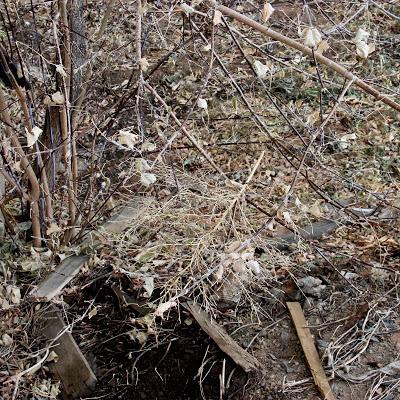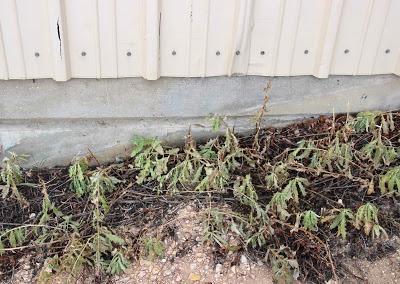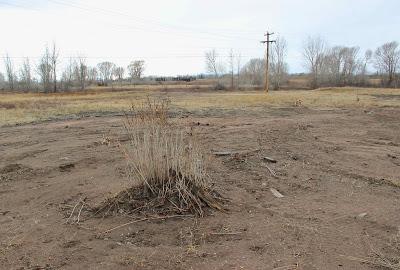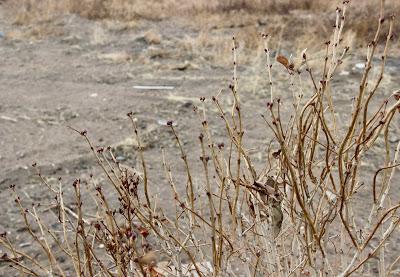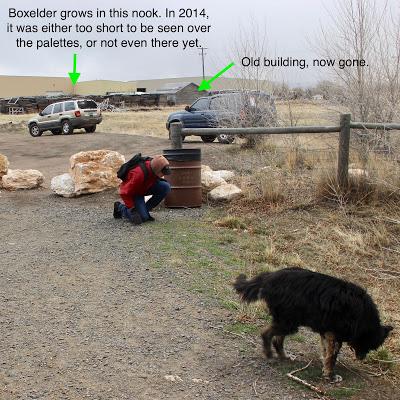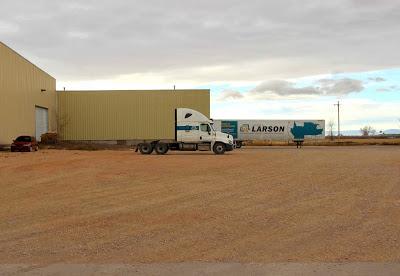
Standard approach photo—boxelder on left, in nook formed by warehouse walls.
National Weather Service Observed Weather for Laramie, Wyoming; November 10, 2018, 9:53 AM (MDT): partly cloudy; 36º F; humidity 31%; winds westerly, 28 mph with gusts to 38 mph.Conditions were not ideal for plant photography, but I had no choice. There would be no other opportunities to visit the boxelder I’m following if I wanted to post my report before the deadline. So off we went.
Even from a distance, the change was obvious. A month ago, the boxelder still was covered in green leaves, even though most other trees had turned color or were bare. Now the boxelder is bare too, except for a few memories.
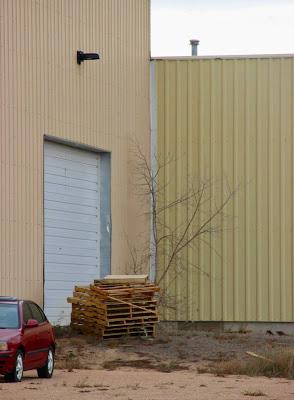
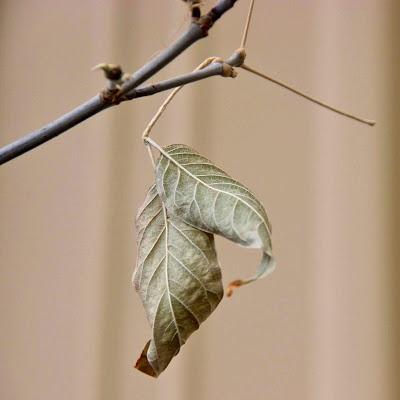
Leaf still hanging on (boxelder leaves are compound).
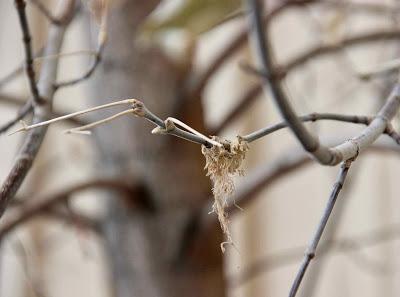
Amazingly persistent spring flowers; note anthers at ends of dangling filaments (male tree).
I saw many more remnant petioles (visible below), which I mentioned last month. I had no idea that boxelders drop leaf blades but not petioles, or at least not yet. Do maples do this? (both boxelder and maples are in the genus Acer) Any other plants, do you know?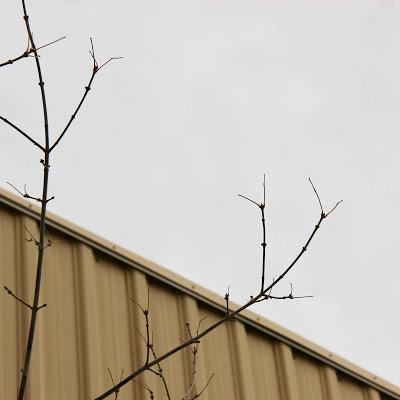
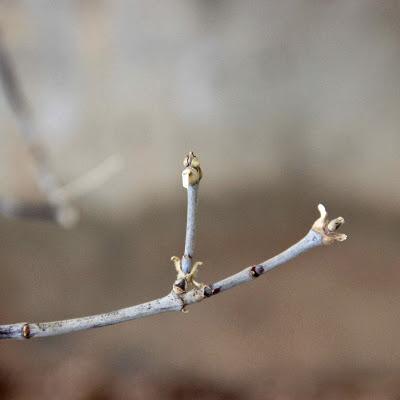
Flower and leaf buds.
A tumbleweed had lodged in branches near the base of the tree (straw-colored, mid-photo below). This was no surprise. The field across the river to the west, part of the Territorial Prison tourist attraction, was cleared of vegetation a few years ago, I have no idea why. Now it’s perfect habitat for tumbleweeds, and every year around this time, they cut loose and head into town, dropping seeds as they go. This one is kochia (Kochia scoparia), the most common of our tumbleweeds.